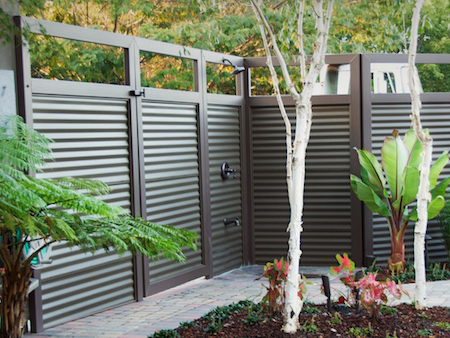Fencing
 Determine Spacing for Fence Posts
Determine Spacing for Fence Posts
Decide how far apart you’d like to set the fence posts. Typically, fence posts are spaced between six and eight feet apart. The corner posts are set first. To align all of the posts in between, stretch a line from each corner post to work as your guide. Mark the exact position where you’d like each post hole dug.
Prepare Holes and Posts
When setting the fence posts, make sure about 1/3 of each post is buried in the ground. This helps the posts endure heavy weight and high winds. To dig the post holes, use a post hole digger. For the section of the wooden posts that will be buried in the ground, use a wood preservative to protect the wood from rotting and breaking down over time.
Set Posts
Place two to three shovel scoops of gravel at the bottom of each post hole before placing the post into position. Use a level to make sure the post is plumb. After the posts are properly aligned, brace each post with stakes. With the posts aligned, fill the hole with dir, tamping the ground at the post base to pack the dirt. Be careful not to disturb the post alignment during the tamping process.
Attach Rails to Fence Posts
Install a bottom and top rail to attach to the fence posts. In this project, we used a "butt joint" to secure the rail to the body of the post rather than the top of the post. A "butt joint" is a basic wood joint where the ends of the rails are aligned, placed together and then secured. Be sure to measure that the top and bottom rails are perfectly aligned.
Install Fence Boards
In this project, we installed a simple board fence. This style allows those sitting inside the patio area to see a seamless, vertical look. At one of the fence post corners, fix the first board. Use a plumb level to ensure the board is vertical and nail it into place. At another fence post corner, fix another board into place. Place a string line to the top of both boards. Place another board against the first board. Nail it into place and repeat this action until all boards are installed. Every 10th board or so, check to be sure they are plumb and adjust accordingly.